Spiced Amaranth






It’s official–traveling is back. But while we daydream and plan the perfect vacation, it’s important to keep one thing in mind: Travel (especially by plane) is hard on the body.
That’s why we’re sharing five Ayurvedic tips for staying healthy and balanced when flying. Try these simple, powerful strategies to bring more ease to your journey whether you’re traveling for work or pleasure.
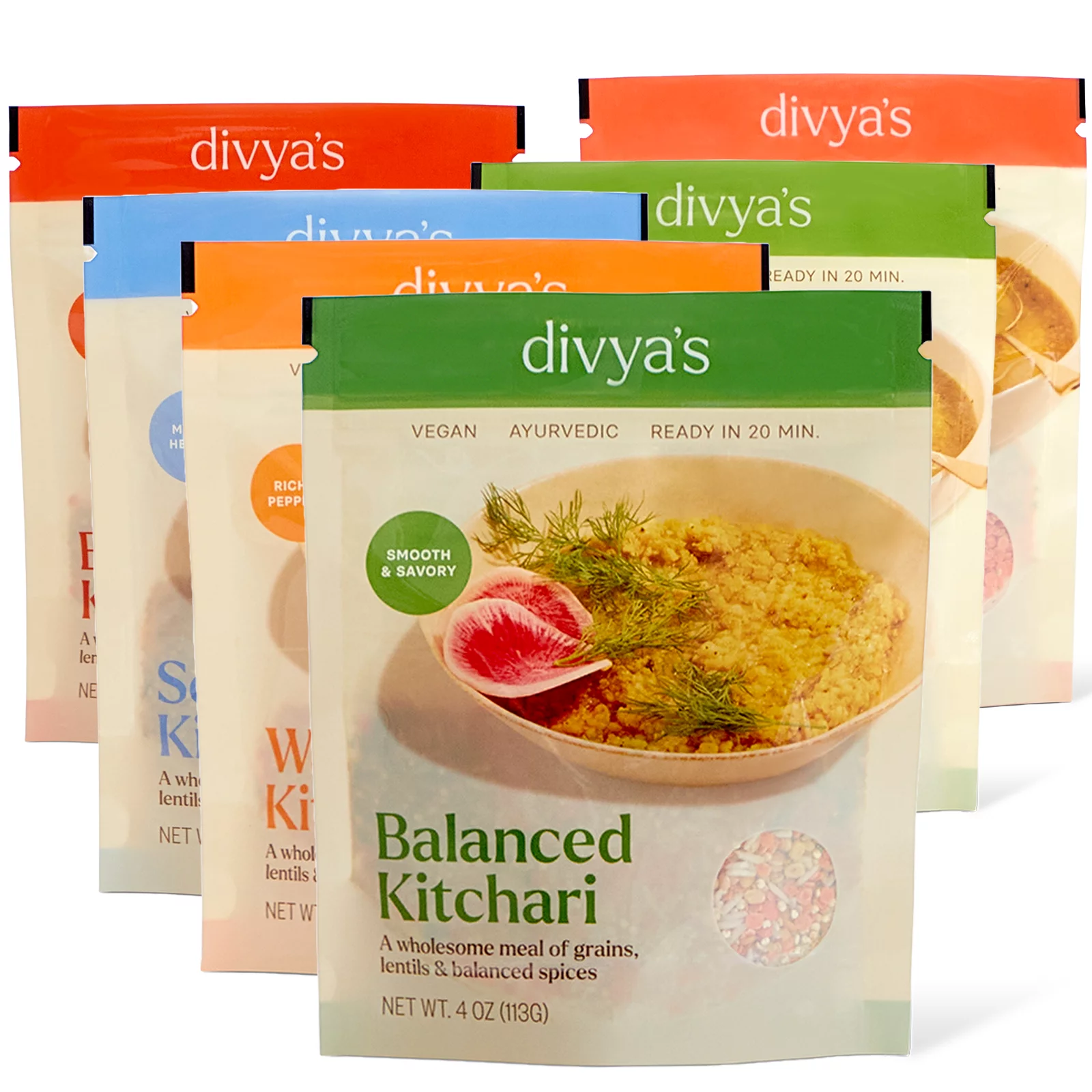
Ayurvedic guidelines for staying healthy and balanced before, during and after traveling by plane.
$44.99 — or subscribe and save 15%–
Add to cart
Our full collection of one-pot meals. Ready in 20 minutes.

Ayurvedic guidelines for staying healthy and balanced before, during and after traveling by plane.
$44.99 — or subscribe and save 15%–
Add to cart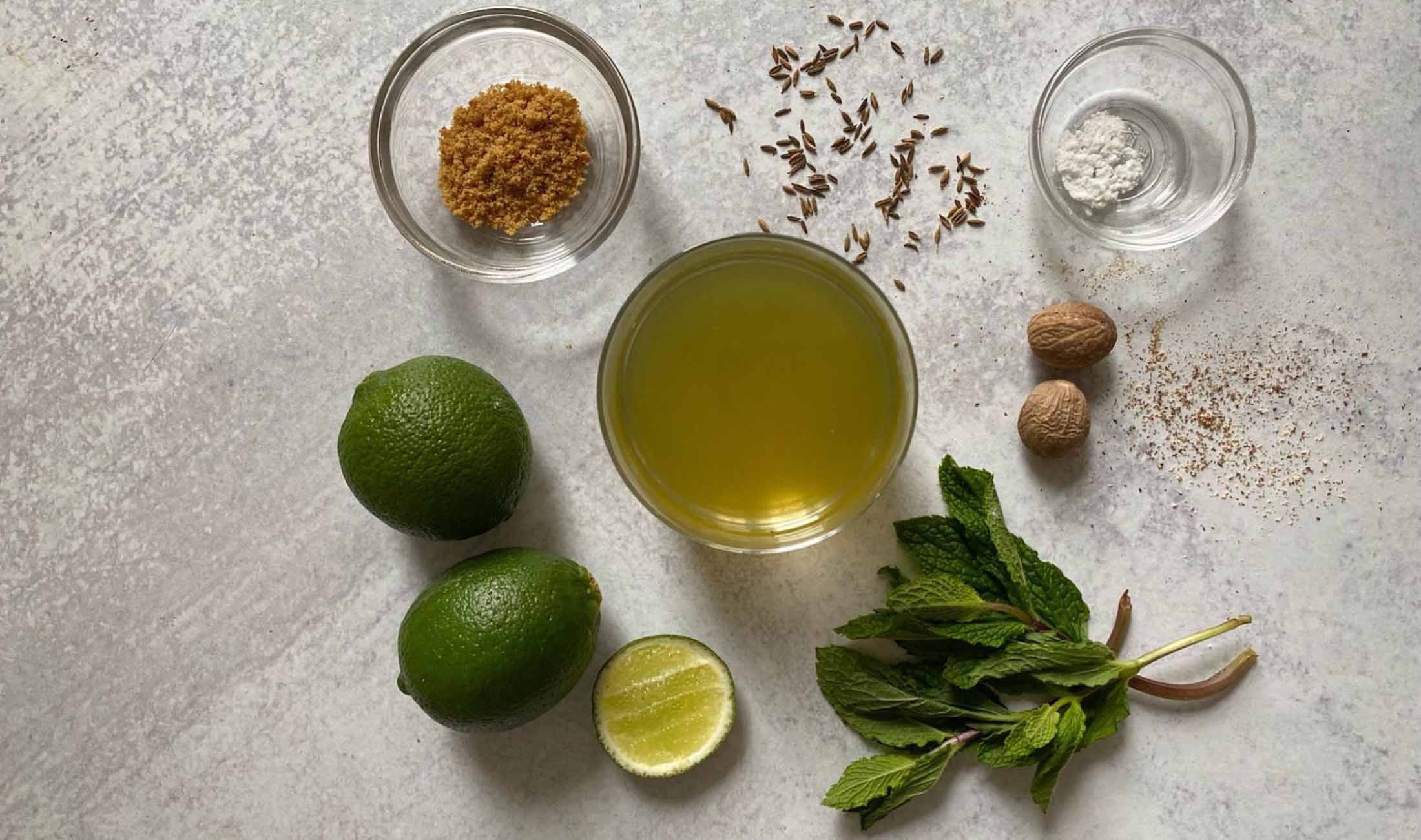
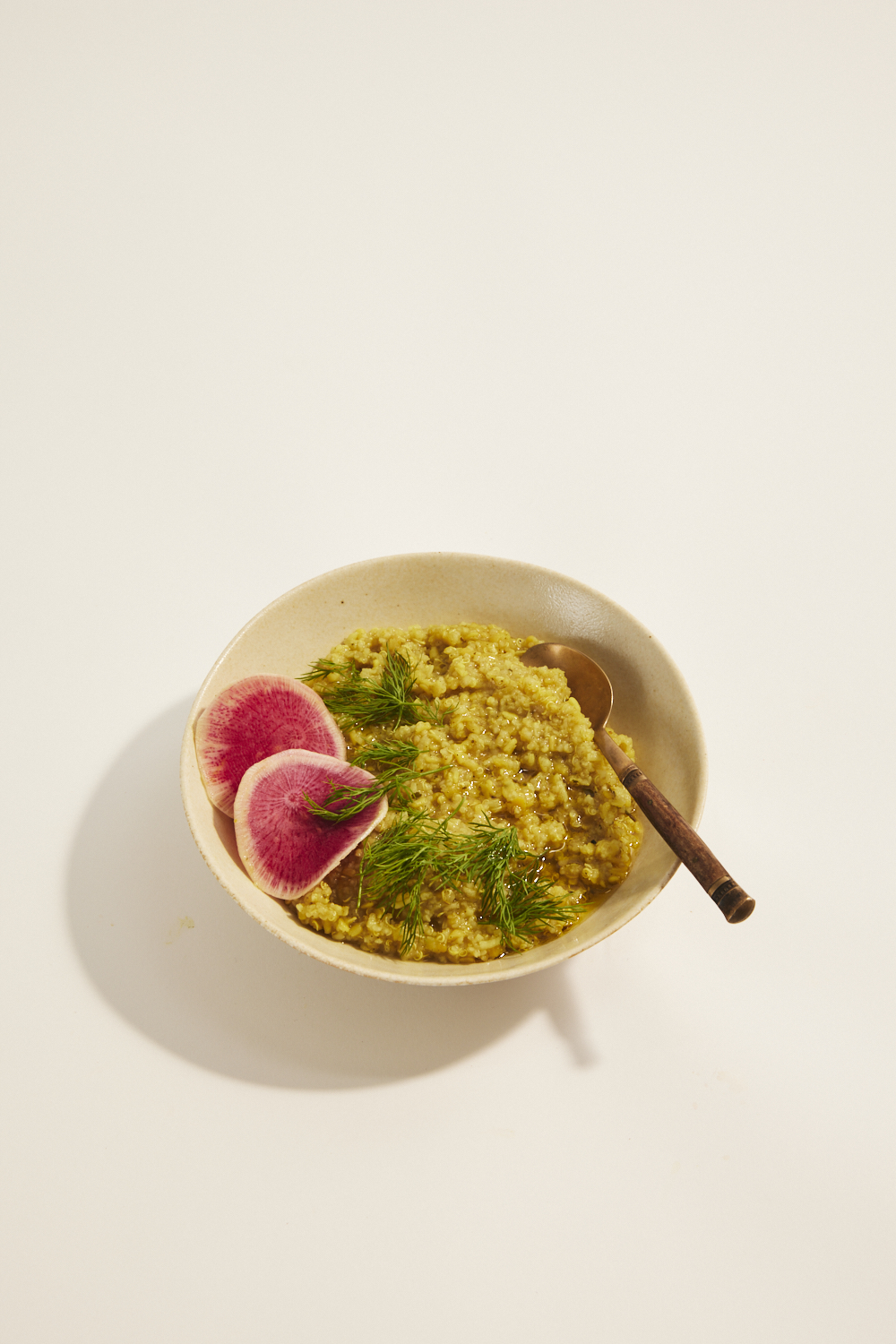
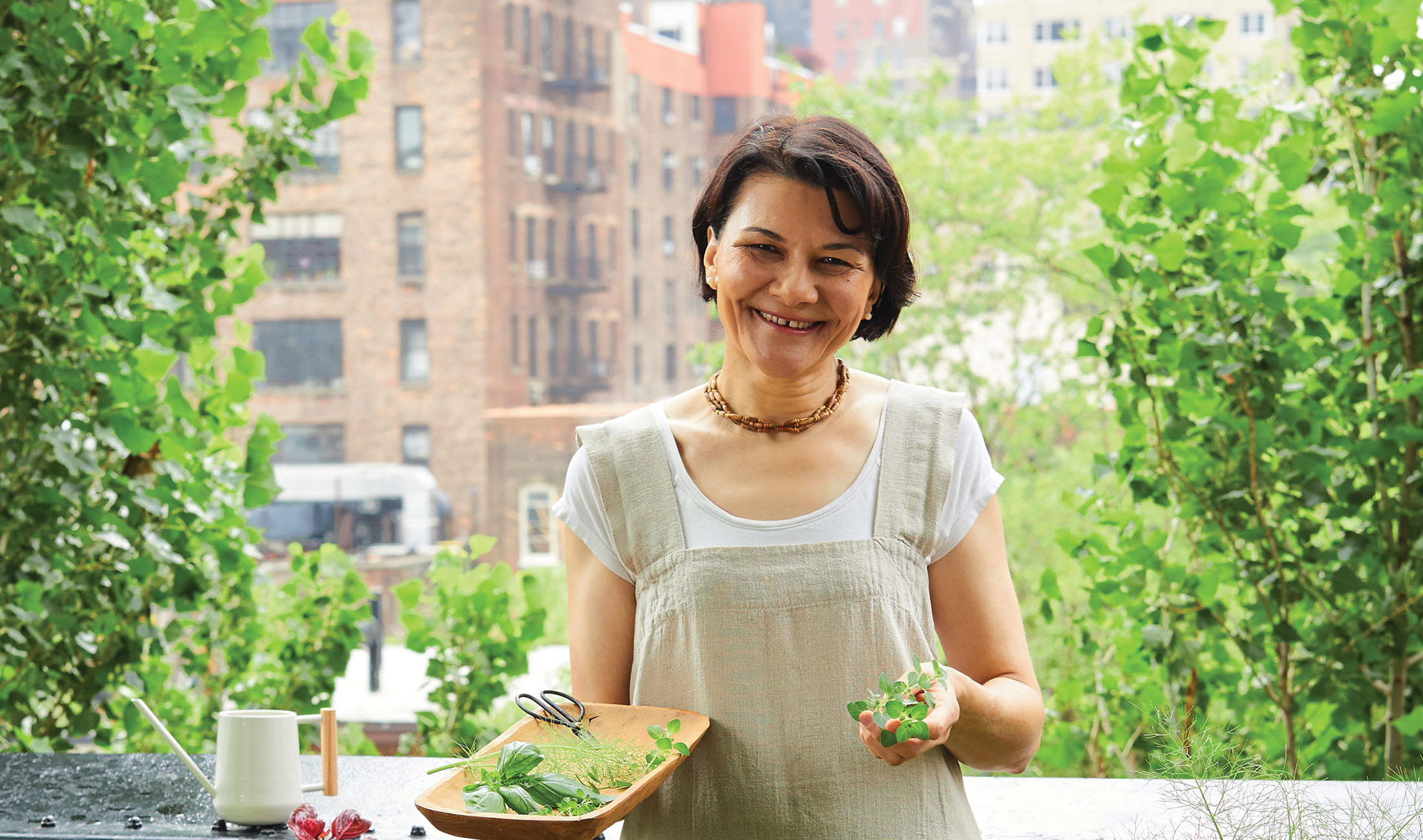

Whether you’re new to Divya’s Kitchen or you’ve been following us for a while, we thought you’d enjoy these fun facts about the visionary behind the brand: Chef Divya Alter. After all, it’s her own incredible story of exploration and healing that inspired her to launch Divya’s Kitchen in the first place.
Some of them might be familiar, and others may surprise you. But each one offers a window into what makes Divya…well, Divya.
“I grew up in Bulgaria during the communist regime. Even though our connection with the world and exposure to foreign cultures and foods were limited, I had a happy childhood. I spent a lot of time in nature and playing outdoors. I was an excellent student and always ended up in leadership positions.”
“I joined a bhakti-yoga ashram in my hometown, Plovdiv, at the age of 18, and I practiced a monastic lifestyle for 15 years before meeting my husband Prentiss. This is where I learned how to cook and fell in love with serving others.”
“In her youth, my mom, Vera, was an athlete, a national ski champion, and a professional ski instructor. She put me on skis as soon as I learned how to walk. Our whole family used to compete in regional and national ski events. I’ve won a couple of regional gold medals as a teenager :-)”
“I was in the school choir for a few years. While in India, I studied classical raga singing and I learned how to play the tamboura (a string drone instrument). I love to sing chants and Sanskrit poetry–it’s the healing type of music. I stopped when we opened our restaurant (too busy), but now I’m gradually getting back into it.”
“At home I take care of our balcony garden, where I grow 20 culinary herbs and fragrant flowers. Whenever I visit my Mom in Bulgaria, I spend most of my time in her garden–weeding, harvesting, pruning, cleaning. I hope to one day have a teaching kitchen with a bigger garden, so I can provide my students with a full farm-to-table experience.”
We hope you enjoyed these fun facts about Divya! If you’d like to learn more about her story–especially her introduction and personal connection to Ayurveda–we recommend this podcast episode.
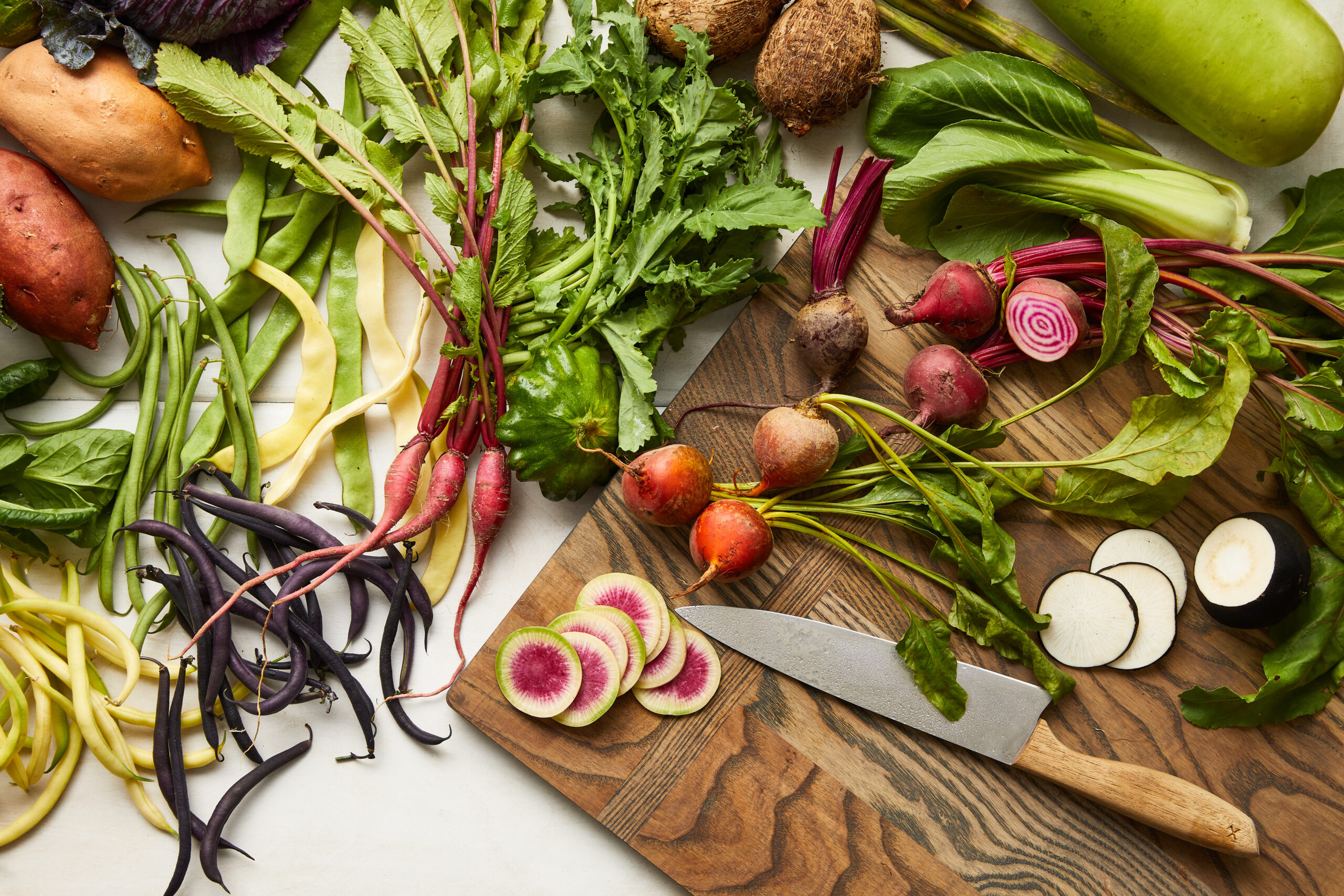

Spring is coming – and as we transition from the heaviness of winter to the busyness of summer, it’s the perfect time to consider a detox. That’s because spring is when our microchannels naturally expand and soften, making it easier for us to release the toxins that have built up in our system.
It also happens to be the season of bitter greens and other foods that support the liver – our primary detoxifying organ.
Sounds simple. Spring time = detox time, right? Not exactly.
Poke around the internet and you’ll notice that most detox regimens are based on juicing, fasting, colonics, and other highly restrictive diets. According to Ayurveda, these methods are often too harsh for our complex, delicate digestive systems. In fact, Divya compares them to blowing up a bomb in the body.
But we don’t need to blow up anything in order to detox. The body already has its own process for the elimination of toxins – we just need to support it with certain food and lifestyle changes. The nature of those changes depends on your unique body and your specific imbalances, which means we can’t possibly know the perfect protocol for you. But with that in mind, here are some general protocols and guidelines to help you plan your next detox.
This simple, gentle detox program relies on the classic Ayurvedic one-pot meal:
For one to five days, whenever you feel hungry, eat only freshly cooked kitchari and drink only herbal teas and hot water. Refrain from eating or drinking anything else. This simple, gentle fast helps reset your digestive system.
Although it’s a safe and natural process, there are times when it’s best to avoid a detox protocol.
Do NOT detox if you’re experiencing any of the following:
That’s it. We hope this helps you find your perfect way to cleanse and reset. When in doubt, contact an Ayurvedic practitioner who can help you develop a personalized protocol. And remember, the body already knows how to do this work – it just needs a little support.

Spring is a time for new beginnings, both inside and out. In this article, we’ll cover why spring is the perfect time for detox, Ayurveda’s holistic approach to detoxifying the body, some universal tips, and how to find the perfect protocol for you.
$30.99 — or subscribe and save 15%–
Add to cart
Single servings of our complete kitchari collection.

Spring is a time for new beginnings, both inside and out. In this article, we’ll cover why spring is the perfect time for detox, Ayurveda’s holistic approach to detoxifying the body, some universal tips, and how to find the perfect protocol for you.
$30.99 — or subscribe and save 15%–
Add to cart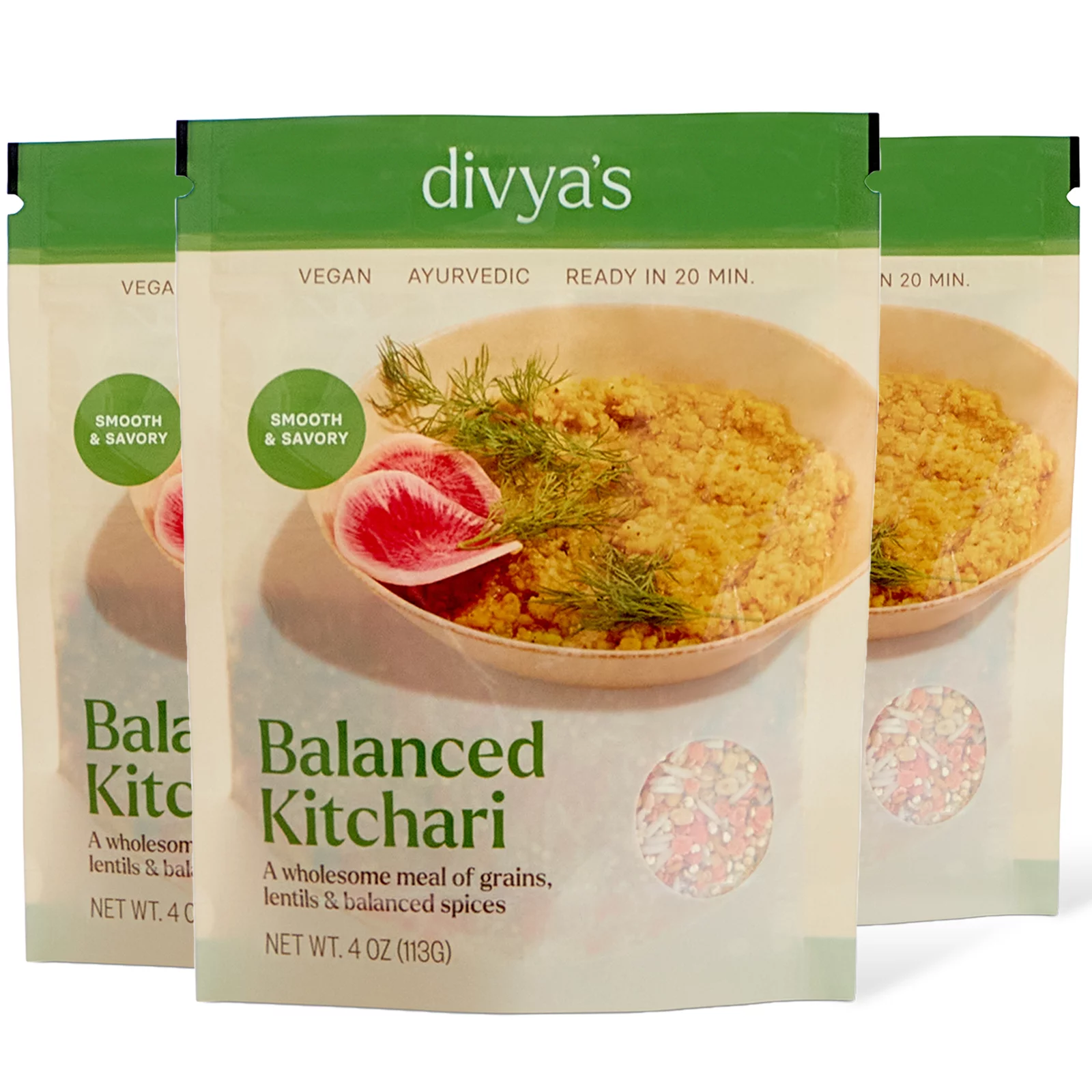
Spring is a time for new beginnings, both inside and out. In this article, we’ll cover why spring is the perfect time for detox, Ayurveda’s holistic approach to detoxifying the body, some universal tips, and how to find the perfect protocol for you.
From $12.99 — or subscribe and save 15%–

Smooth and savory. For any time of year, or when you’re feeling imbalanced.

Spring is a time for new beginnings, both inside and out. In this article, we’ll cover why spring is the perfect time for detox, Ayurveda’s holistic approach to detoxifying the body, some universal tips, and how to find the perfect protocol for you.
From $12.99 — or subscribe and save 15%–



Photo c/o Briana Balducci from Divya’s Kitchen
We all crave sweets from time to time. The question is: what do you do when the urge strikes? Do you indulge? Begrudgingly abstain? Or do you enjoy them fully, but in moderation?
Most importantly: How do you feel after each of the above scenarios? Noticing how you feel after eating sweets (or any other kind of food) is essential for maintaining good health. It allows you to understand your ever-shifting needs and to make the right decisions about what to eat.
Most of the time, we turn to sweets when we’re tired, unmotivated or emotionally drained. Unfortunately, these foods are limited in how much they help and overindulgence can lead to further imbalances.
As an alternative, here are some simple tips for transforming sugar cravings (as well as the root feelings of fatigue and emotional heaviness):
Finally, you can find some excellent teas here at divyas.com that help balance blood sugar after eating sweets and reduce sugar cravings: Gymnema Brew, Vaidya’s Cup, Tripti Tea. Drink any of these after a meal and you will feel energized!

Ayurveda tells us that there’s room for sugar in a healthy diet, but it’s important to choose wisely. The key: Enjoy sweets in moderation and seek healthier alternatives when possible.
$30.99 — or subscribe and save 15%–
Add to cart
Single servings of our complete kitchari collection.

Ayurveda tells us that there’s room for sugar in a healthy diet, but it’s important to choose wisely. The key: Enjoy sweets in moderation and seek healthier alternatives when possible.
$30.99 — or subscribe and save 15%–
Add to cart